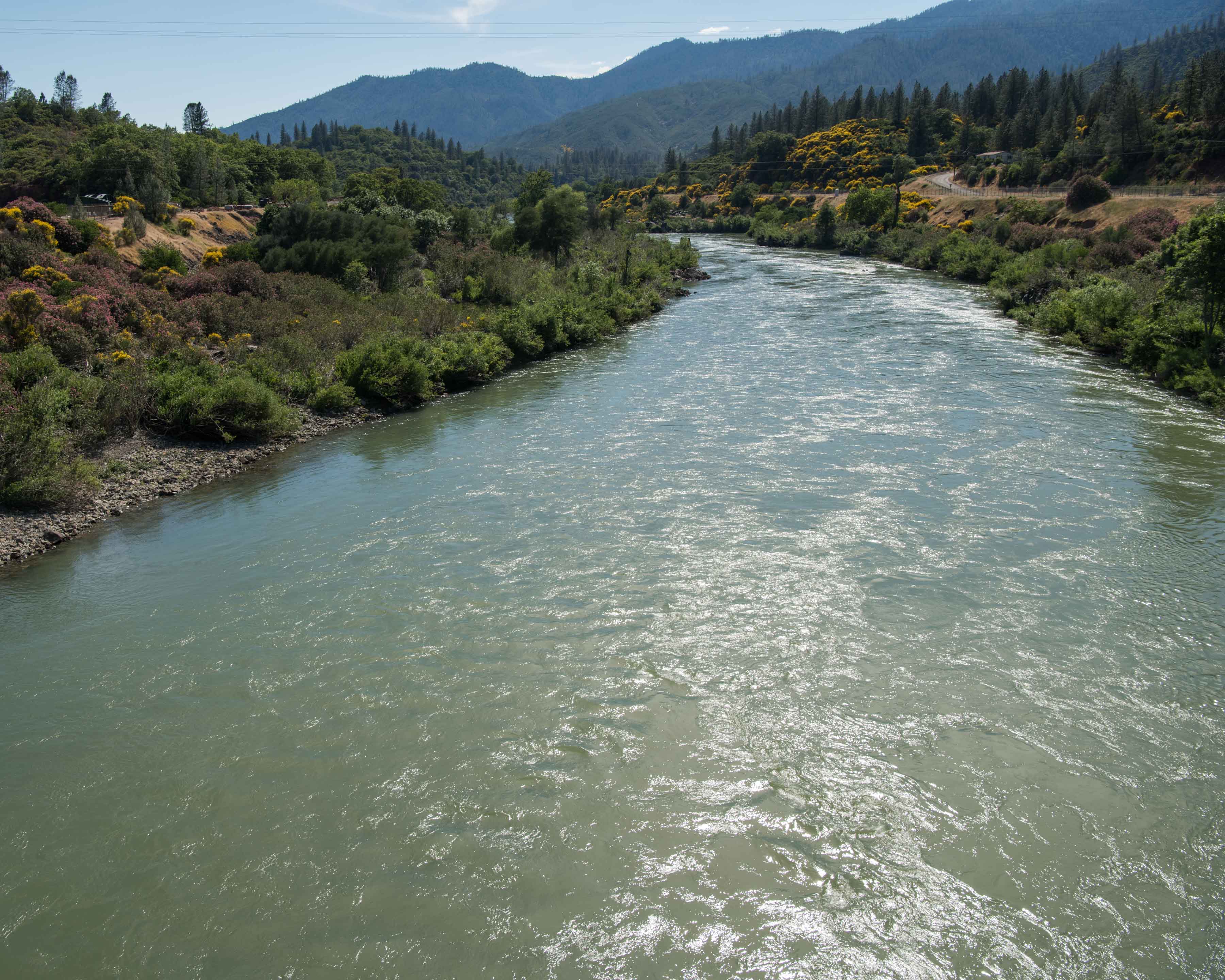 The Central Valley Project in California will receive $61.8 million to address ongoing drought needs throughout the region. Shown: The Sacramento River below Shasta Dam in Northern California. Photo: Reclamation.
The Central Valley Project in California will receive $61.8 million to address ongoing drought needs throughout the region. Shown: The Sacramento River below Shasta Dam in Northern California. Photo: Reclamation.
WASHINGTON – Today, the Bureau of Reclamation released the spending plan for the $210 million provided in the Extending Government Funding and Delivery Emergency Assistance Act (P.L. 117-43). The legislation provides Reclamation with $200 million to address drought conditions throughout the West, as well as $10 million for fire remediation and suppression emergency assistance related to wildfires.
“By funding efforts to address intensifying drought and wildfires, this Administration is making among the largest investments in the resilience of physical and natural systems in American history,” said Assistant Secretary for Water and Science Tanya Trujillo. “This legislation helps protect communities and ecosystems against the threat of wildland fire by making historic investments in drought relief, hazardous fuels management, and post-wildfire restoration activities.”
"Most of the West, and specifically California’s Central Valley, the Klamath Basin in Oregon/California, and the Colorado River Basin, were impacted by this past dry hydrologic year. Recent forecasts show minimal relief for water year 2022," said Reclamation Commissioner Camille Calimlim Touton. "This funding will help protect those communities and ecosystems in the short term, as we leverage our resources in the Bipartisan Infrastructure Law to build long-term water resilience in the backdrop of climate change across the entire West."
Funding allocations include:
- $40 million for the implementation of conserving 500,000+ acre-feet of water over the next two years to stabilize the decline of Lake Mead. This includes $26 million to the Lower Colorado River Operations Program to continue the implementation of Drought Contingency Plan activities, and $14 million to shore up water firming rights for Tribal communities during times of shortage in the Central Arizona water supply.
- This brings the total to $50 million available for the first year of implementation when adding in $10 million in FY 2021 funds reprogrammed for this purpose.
- $1.2 million for the Lower Colorado River Operations Program to initiate coordination of post 2026 operational guidelines and studies related to drought resiliency.
- $61.8 million to California’s Central Valley Project to address ongoing drought needs throughout the region.
- $20 million to the WaterSMART Drought Response Program to address drought planning and implementation actions through a competitive selection process that emphasizes mitigation of drought impacts, involvement from multiple stakeholders, and cost-sharing from non-federal sponsors.
- $10 million for the Klamath Project to support drought response and resiliency activities.
- $10 million for drought mitigation activities for Native Americans.
- $22 million for drought-specific projects and activities, such as additional storage facilities for the Mni Wiconi Project (SD) and water conservation improvements for the Yakima River Basin Water Enhancement Project (WA).
- $35 million for contingency funding to address the most pressing and emerging drought- related needs as the FY 2022 water year hydrology unfolds.
In addition to drought funding, P.L. 117-43 provided Reclamation with $10 million for fire remediation and suppression emergency assistance activities related to wildfires. Climate change and dry hydrologic patterns have made wildfires more frequent and extreme in recent years, where the devasting impacts have dire effects in Reclamation areas. Reclamation’s fire remediation and suppression activities include infrastructure repairs, debris removal, fire suppression, and water quality efforts, as well as risk prevention and future fire mitigation efforts such as fuels reduction and cleanup activities.
For more information, please visit https://www.usbr.gov/budget/.

